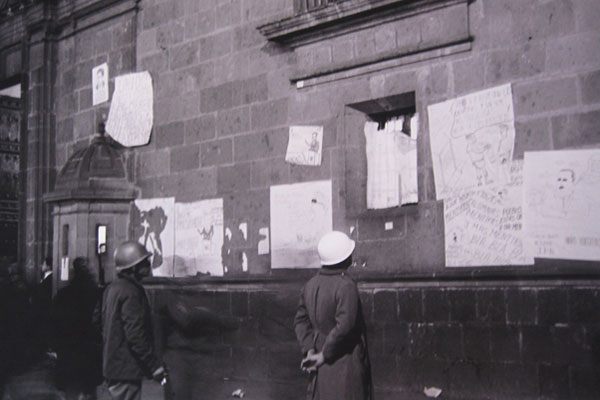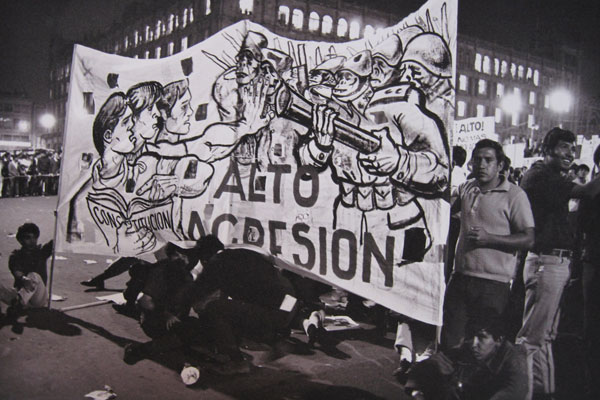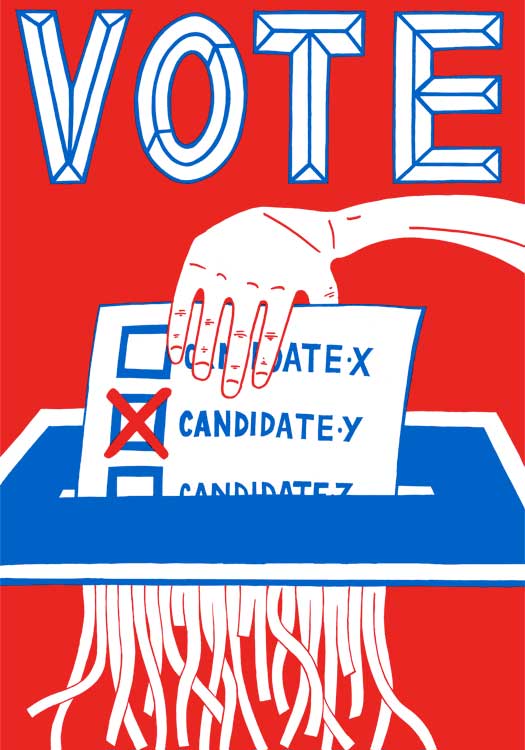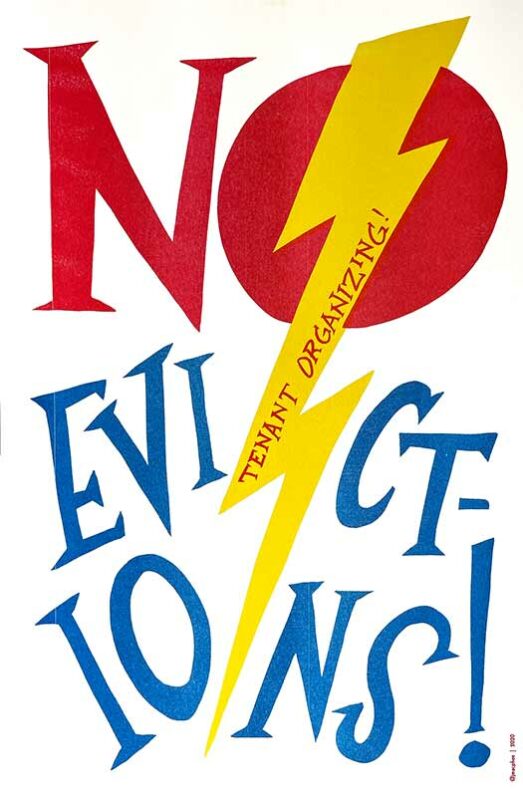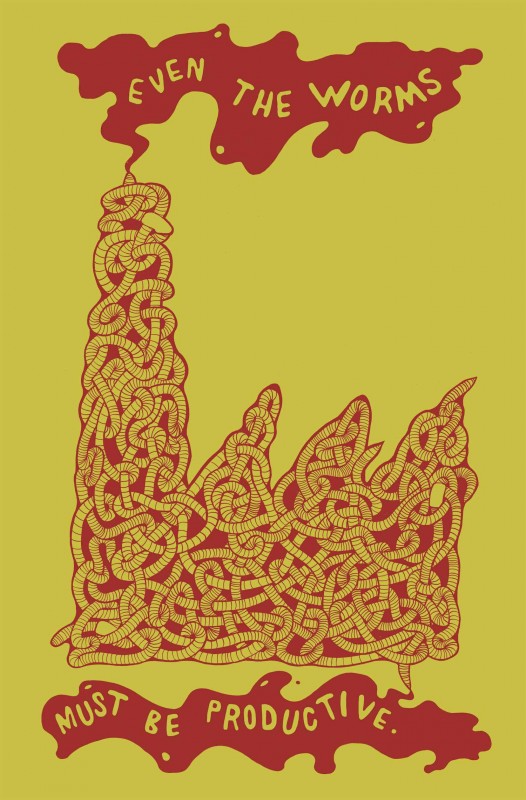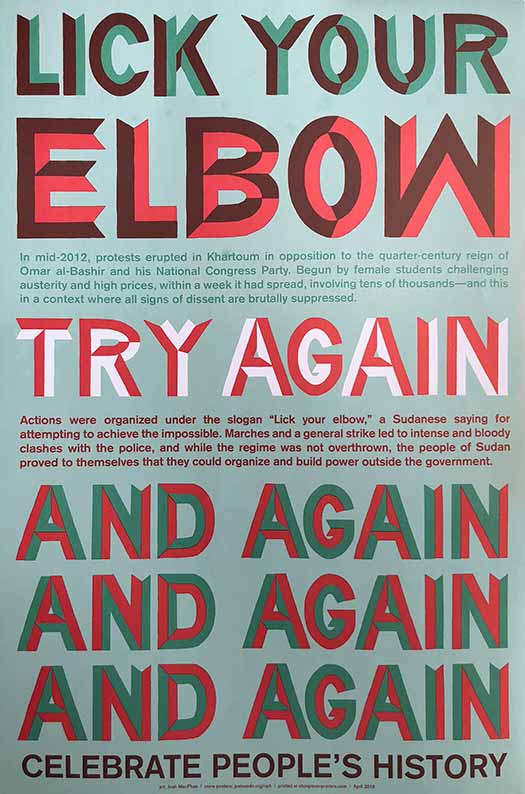I show up in Mexico City on Friday, October 3rd. This is one day after the 40 year anniversary of the Tlatelolco Massacre, a national day of mourning and anger. The day before tens of thousands had filled the Tlatelolco Plaza (and other parts of the city) in memory of 1968, and by night the city had erupted in violence, with sporadic rioting, street fighting and window smashing (there is a great slideshow of photos here). I arrived to photos of punks attacking cops on the covers of all the newspapers. This is my kind of town! On further exploration it is pretty unclear what really happened, as there are stories of the cops paying street kids to run crazy, and the mainstream news coverage was filled with stories of how restrained and well behaved the police were, as if the entire incident was a well managed photo-op.

But street fighting isn’t the only action in Mexico. For over two months the teachers in Morelos have been on strike, and increasingly teachers, and workers in other trades, have been holding solidarity strikes in states across Mexico. This includes the mobilization of teachers in Oaxaca, and a march of members of the APPO (Popular Assembly of the Peoples of Oaxaca), which formed out of 2006’s popular uprising in Oaxaca, to Morelos to support the teachers.
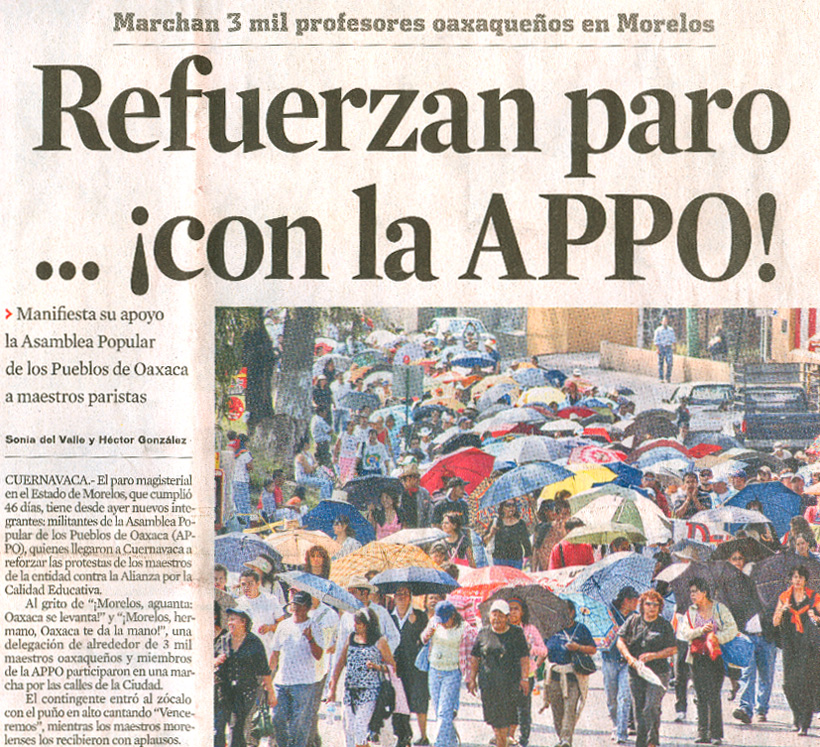
The day I arrived right-wing tabloids pulled a trick from Paul Revere, and screamed from their mastheads “The APPO is Coming! The APPO is Coming!,” as if that was a bad thing. Few seemed that concerned, the vast majority of Mexico’s population is either struggling working class, poor or even poorer, and most seem to identify with the recent popular revolts in Chiapas, Oaxaca and Atenco.
The last time I was in Mexico City was back in 2002, and it definitely has changed. The city center has been seriously gentrified and deeply changed. Five years ago the area around the Zocolo (the massive public square in the middle of the city) was filled with people trying to sell anything and everything you could imagine, from bootleg cd’s to the rubber feet on kitchen appliances.
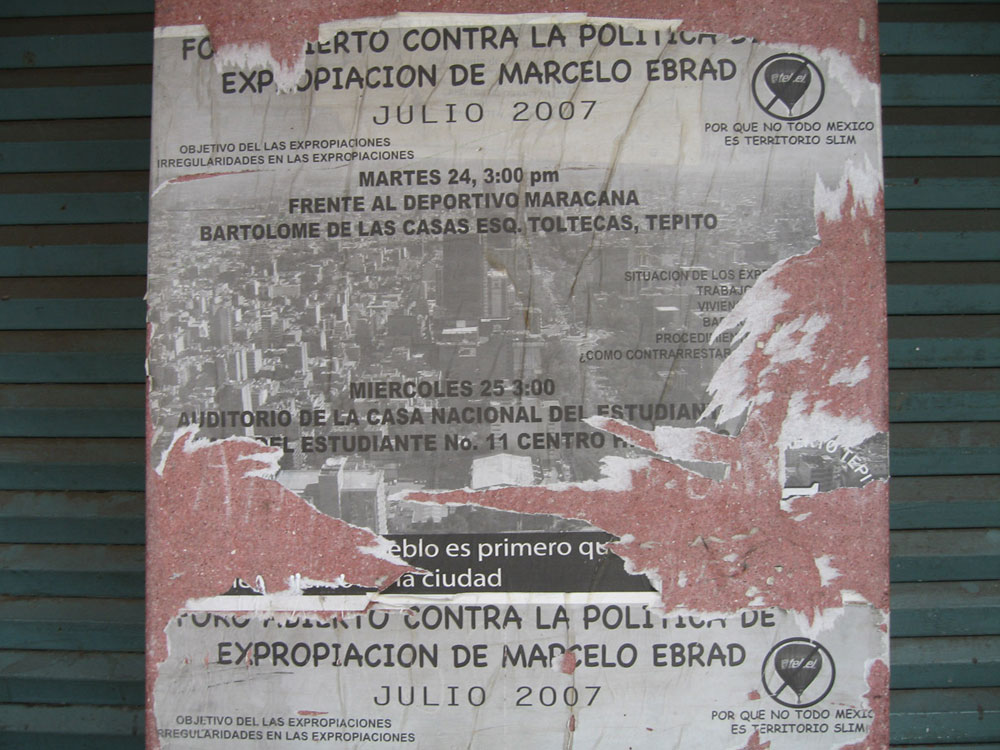
People, never mind cars, could barely manouver through the rows of stands and blankets filling almost every street. Now the streets are mostly clear, with cabs and cop cars (always with their lights flashing for no apparent reason) zipping around, each looking for action in their own way. The Zocolo had been filled with hundreds of tents, with people selling books, camping out in protest, doing educational activities. Punk kids hanging out by the giant flag pole had pointed me in the direction of UTA, the anarchist bar and social center. Now that’s all gone. The Zocolo itself is clean and nearly empty, venders are pushed to the edges, their goods homogenized to lowest common denominator tourist shlock and weird religious knicknacks.
Carlos Slim and his cronies seem to have pretty successful killed off autonomous life in the center of Mexico City. It is still beautiful, but seems empty and hollow, like an ancient building with all the original stone and woodwork, but abandoned by its residents. The entire area used to be covered by posters and graffiti, Declarations from the walls called to stop the privatization of the electric utility, or the overthrow of President Fox, or support for the Zapatistas. Now the blank walls simply cry “No Anunciar”—Post No Bills.


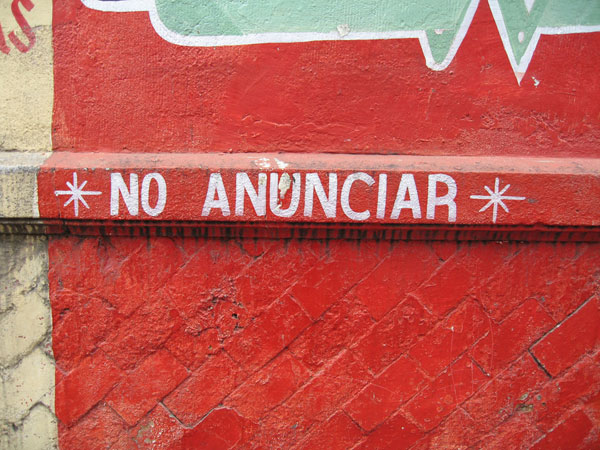
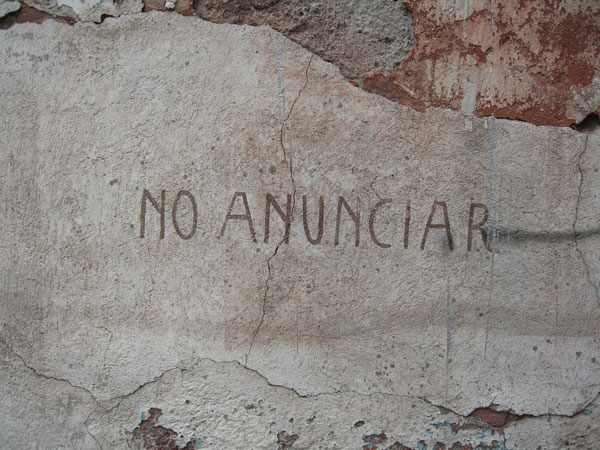
There are still some pretty great cultural venues in the center. The National Palace houses some of Diego Rivera’s most impressive murals, and Bellas Artes does the same for David Alfaro Siqueiros. We also stumbled upon a small art center off the Zocolo which had two great photography exhibits up, one of images of opposition to the coup in Chile in 1973, and the other of Mexico 1968. The images were powerful, and the politics very direct and upfront. Mexico is so different that the US in this respect, while our country does everything possible to bury our history of radical political activity, Mexico revels in their history, centering it in the national identity.
